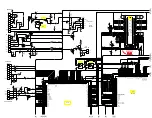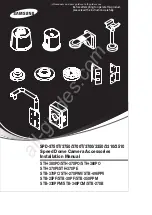
PI16xx PI18xx
Electronic pressure sensor
12
5 Installation G1 sealing cone (PI16xx)
Before installing and removing the unit: Make sure that no pressure is applied to the system and
there is no medium in the pipe or tank.
u
Note dangers related to machine / medium temperatures.
Information about available adapters at:
u
Observe the instructions of the adapter.
u
Use a lubricating paste which is suitable and approved for the application.
u
Insert the sensor with the process adapter into the process connection.
u
Tighten it using a spanner: Tightening torque 20 Nm.
The process adapter can be adapted to different process connections.
Options are as follows:
1: Installation in process adapter with sealing ring
u
Insert the sealing ring into the groove of the adapter before mounting the sensor.
u
Use a suitable O-ring approved for the application in hygienic applications.
Use of welding adapters:
u
During the welding process, make sure that the adapter is not deformed and that the sealing area
is not affected.
u
Observe the instructions and data sheet of the adapter used.
u
Use brass mandrel E30435 for optimised heat conduction.
When reworking the weld seam:
u
Leave out or protect the sealing area.
2: Installation in process adapter with metallic sealing edge
An elastomer-free sealing in chemical applications is possible with a metal-to-metal seal.
u
For hygienic applications, avoid repeated installation to avoid compromising the sealing effect.
A guarantee for a long-term stable sealing effect only exists with one-time installation.
Use of welding adapters:
u
During the welding process, make sure that the adapter is not deformed and that the sealing edge
is not affected.
u
Observe the instructions and data sheet of the adapter used.
u
Use brass mandrel E30435 for optimised heat conduction.
When reworking the weld seam:
u
Leave out or protect the sealing edge.
3: Installation to G1 flange / G1 socket
The sensor is sealed with the sealing ring at the back of the process connection.
u
The sealing area on the flange/socket must be flush with the tapped hole and have a surface
characteristic of min. Rz = 6.3 (observe DIN EN ISO 1179-1).












































